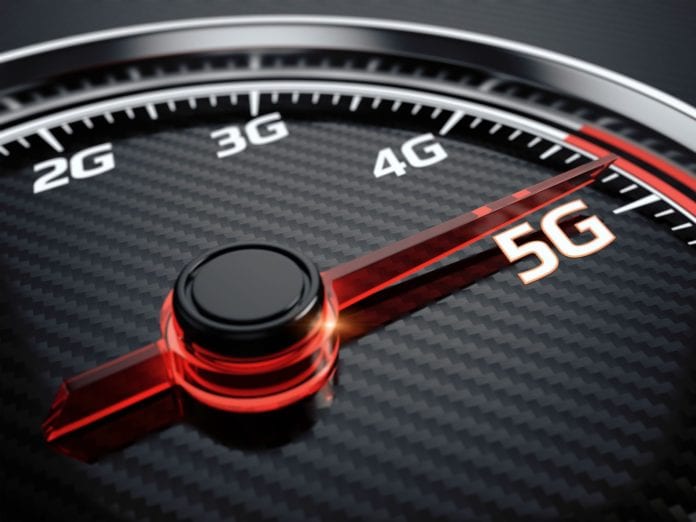Operators around the world prepping for rapid commercialization of 5G
As the 3GPP works toward finalizing the 5G New Radio specification, set for mid-2018, operators, infrastructure providers and the larger telecom ecosystem have engaged in a number of promising pre-standard 5G trials that lay the groundwork for rapid commercialization of ultra-high-capacity, ultra-low-latency network applications. Here we take a look at some of the stand-out testing activity.
Ericsson and Orange
Spanish operator Orange and Ericsson conducted a trial in real-world, outdoor surroundings in Spain, according to local press reports. During the 5G trial, the two companies said they reached speeds of 12 Gbps to 17 Gbps at street level.
The trial was conducted outside Ericsson’s Spanish headquarters in downtown Madrid, with the companies using a base station weighing 300 kilograms as well as multi-user MIMO (MU-MIMO) and beamforming technology to simulate customer experience at street level.
The participating companies also said latency was reduced to less than 1 millisecond, compared to 20 milliseconds for 4G and 800 milliseconds for 3G. In order to carry out this 5G test, the Spanish government granted temporary permission for the companies to use an 800 megahertz in the 28 GHz band.
NTT DoCoMo and Huawei
Japanese telco NTT DoCoMo announced the completion of what it claims to be the world’s first outdoor trial of 5G mobile technologies for ultra-reliable low-latency communications (URLLC) using a 4.5 GHz system developed in collaboration with Chinese vendor Huawei. The Japanese telco said the 5G trial simulated a realistic environment involving a stationary mobile terminal that received signals at distances of 0.8 to 1 km from the base station.
DoCoMo said the trial achieved an over-the-air latency of less than 1ms with a packet transmission success rate of more than 99.999% –both prerequisites for URLLC under 3GPP and ITU-R standards.
Similarly, ultra-reliable low-latency communications were also achieved at distances of approximately 0.3 km to 0.6 km from the base station, when the mobile terminal was moving at approximately 25 km/h.
ZTE and Softbank
Chinese vendor ZTE Corporation, together with Japanese telco SoftBank, successfully verified the 24-stream space division multiplexing technology by using pre-standard 5G TDD massive MIMO technology on a commercial network in Nagasaki, Japan. In this verification test, 24 terminals downloaded FTP data simultaneously at a rate of 956 Mbps on a 20 megahertz channel, ZTE said.
The vendor highlighted this is the first test in a commercial network after ZTE’s Pre5G TDD massive MIMO achieved the rate of 1.1 Gbps in a 24 stream field test in Shenzhen, China. SoftBank is ZTE’s first pilot partner in the Smart Life project. The two parties carried out research and development on the improvement of spectrum efficiency, 4G/5G network integration, mobile bandwidth, IoT, and internet of vehicles.
The Smart Life project is an important strategic project of ZTE for post-4G networks. In this project, ZTE planned and discussed product solutions with operators, and verified solutions under different application scenarios for several fields in the industry.
Verizon, Cisco and Samsung
Verizon tested fixed wireless 5G in 11 U.S. markets over the course of the year; the idea was to prove the technology in a variety of geographical settings and with varying vendor support. In this case, Samsung provided its virtual radio access network solution and pre-5G, which has yet to be standardized by 3GPP, base station and home router equipment. Cisco provided a virtual packet core. The companies worked together on interoperability testing focused on connections between the core and radio networks, and user devices.
Building on that testing, Verizon recently announced it would offer commercial residential broadband services in the second half of 2018 in three to five markets beginning with Sacramento, Calif. Ericsson won the contract deal for the planned deployment, with an agreement covering core, RAN, transport and services.
Nokia and Elisa
In Finland, operator Elisa worked with compatriot vendor Nokia to test fixed wireless access, although the two companies did not disclose the frequencies used.
The trial set up was described as a base station located on a mast and connected back to the network via fiber. The two companies tested a virtual reality application wherein a users wearing a headset watched VR footage of metal band Amorphis, known for albums including Skyforger and Under the Red Cloud. The two companies claimed the test marked a first in the Nordic countries.
Matias Castrén said fixed wireless access “will provide an alternative to other fixed high-speed and high-quality fixed broadband connections in the future with wider coverage and in larger areas.”

